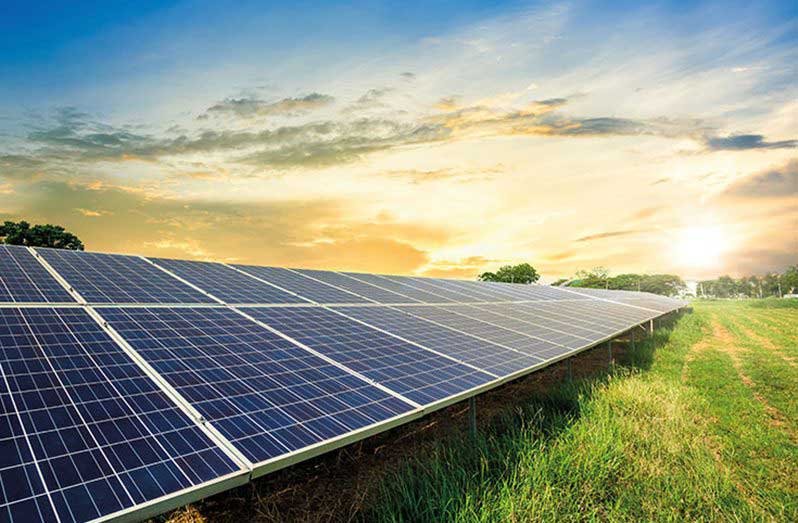Close

In a major step toward inclusive development, the Government of Guyana has enhanced access to clean and reliable energy in Region 9 (Upper Takutu–Upper Essequibo) through the installation of three solar-powered clinics and community centers since 2020. These facilities, introduced in villages such as Annai, Aishalton, and Nappi, are providing far more than just electricity—they are strengthening healthcare delivery, education, and community engagement (Office of the Prime Minister – Hinterland Electrification Programme).
The transformation in healthcare has been particularly significant. Previously dependent on diesel generators, local clinics can now consistently power essential medical equipment, lighting, and refrigeration for vaccines. These improvements have led to better maternal care, emergency services, and immunization programs, especially benefiting indigenous populations across the region (Guyana Energy Agency, 2023 Report on Renewable Installations in Hinterland Regions).
Community centers have also been revitalized. The introduction of solar energy has enabled these hubs to support evening adult education programs, digital literacy for children, and safer public gatherings. Importantly, with access to electricity and internet, these centers now host e-Government services, allowing residents to access state programs and information without traveling long distances (Ministry of Amerindian Affairs).
This initiative is closely aligned with Guyana’s Low Carbon Development Strategy (LCDS) 2030, which focuses on expanding renewable energy use while promoting socio-economic growth in rural and hinterland areas. By reducing dependency on imported fossil fuels and embracing clean energy, Region 9 is contributing to both local empowerment and national climate goals (LCDS 2030, Office of the President).
A
resident of Annai, shared her experience: “We no longer fear losing power during emergencies or childbirth. The clinic is always lit, and the vaccine fridge stays running. It’s made a real difference in our lives” (Ministry of Health – Regional Health Services).
These installations are not just about solar panels—they are about delivering light, health, and hope. In Region 9, energy resilience is empowering communities and improving lives. This is what true, sustainable progress looks like.

The Guyana Project is an independent media platform delivering fact-checked, ground-level reporting on politics, economy, and public life in Guyana. With a focus on transparency and development, we bring unfiltered news and thoughtful analysis to help shape a more informed, forward-looking nation.

Shining a Light on Development: Solar Power Revitalizes Region 9 Communities

Lorem Ipsum is simply dummy text of the printing and typesetting industry. Lorem Ipsum has been the industry’s standard dummy text ever since the 1500s, when an unknown printer took a galley of type and scrambled it to make a type specimen book. It has survived not only five centuries, but also the leap into electronic typesetting, remaining essentially unchanged. It was popularised in the 1960s with the release of Letraset sheets containing Lorem Ipsum passages, and more recently with desktop publishing software like Aldus PageMaker including versions of Lorem Ipsum.
t is a long established fact that a reader will be distracted by the readable content of a page when looking at its layout. The point of using Lorem Ipsum is that it has a more-or-less normal distribution of letters, as opposed to using ‘Content here, content here’, making it look like readable English. Many desktop publishing packages and web page editors now use Lorem Ipsum as their default model text, and a search for ‘lorem ipsum’ will uncover many web sites still in their infancy. Various versions have evolved over the years, sometimes by accident, sometimes on purpose (injected humour and the like).
Contrary to popular belief, Lorem Ipsum is not simply random text. It has roots in a piece of classical Latin literature from 45 BC, making it over 2000 years old. Richard McClintock, a Latin professor at Hampden-Sydney College in Virginia, looked up one of the more obscure Latin words, consectetur, from a Lorem Ipsum passage, and going through the cites of the word in classical literature, discovered the undoubtable source. Lorem Ipsum comes from sections 1.10.32 and 1.10.33 of “de Finibus Bonorum et Malorum” (The Extremes of Good and Evil) by Cicero, written in 45 BC. This book is a treatise on the theory of ethics, very popular during the Renaissance. The first line of Lorem Ipsum, “Lorem ipsum dolor sit amet..”, comes from a line in section 1.10.32.